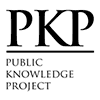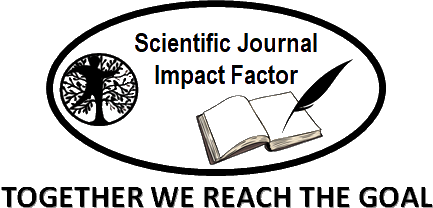Association and Impact of Mathematics Anxiety Levels on the Quality of Students' Understanding Based on Skemp's Theory
Abstract
This study aimed to examine the association between math anxiety and students' comprehension quality based on Skemp's Theory and describe the impact of math anxiety level on students' comprehension quality. This survey research with a quantitative approach involved a population of grade 8 students in junior high schools in Bantul Regency. The sample size was 386 students using stratified proportional random sampling technique. Math anxiety and the quality of student understanding were measured using a questionnaire instrument and description questions tailored to the ratio and proportion material. This instrument has been declared valid and reliable. The data analysis technique is correspondence analysis using cross tabulation to see the frequency distribution in each category and chi-square test to check whether or not there is an association. The results of the study with a 5% significance level showed that (1) the chi square value was 0,36 (< 0,05) which means that there is an association between math anxiety and the quality of students' understanding; (2) the higher the level of math anxiety experienced by students, the lower their tendency to build relational understanding and vice versa, students with high math anxiety tend to develop instrumental understanding or even experience incomprehension of the material.
Keywords
Full Text:
PDFReferences
Arican, M. (2019). Preservice mathematics teachers' understanding of and abilities to differentiate proportional relationships from nonproportional relationships. International Journal of Science and Mathematics Education, 17(7), 1423-1443. https://doi.org/10.1007/s10763-018-9931-x
Ashcraft, M. H. (2002). Math anxiety: Personal, educational, and cognitive consequences. Current Directions in Psychological Science, 11(5), 181-185. https://doi.org/10.1111/1467-8721.00196
Auliya, R. (2016). Math anxiety and mathematical understanding. Formative Scientific Journal of Mipa Education, 6(1). http://dx.doi.org/10.30998/formatif.v6i1.748
Azwar, S. (2017). Psychological Research Methods Second Edition. Student Library.
Buckley, S., Reid, K., Goos, M., Lipp, O., & Thomson, S. (2016). Understanding and addressing mathematics anxiety using perspectives from education, psychology and neuroscience. Australian Journal of Education, 60(2), 157-170. https://doi.org/10.1177/0004944116653000
Carlin, E. A., & Ahrens, A. H. (2014). The Effects of mindfulness and fear-inducing stimuli on avoidance behavior. Mindfulness, 5(3), 276-281. https://doi.org/10.1007/s12671-012-0177-3
Demedts, F., Reynvoet, B., Sasanguie, D., & Depaepe, F. (2022). Unraveling the role of math anxiety in students' math performance. Frontiers in Psychology, 13. https://doi.org/10.3389/fpsyg.2022.979113
Ebel, R. L., & Frisbie, D. A. (1991). Essentials of educational measurement (Fifth). Prentice-Hall, Inc.
Ezaki, J., Li, J., & Copur-Gencturk, Y. (2024). Teachers' knowledge of fractions, ratios, and proportional relationships: the relationship between two theoretically connected content areas . International Journal of Science and Mathematics Education, 22(2), 235-255. https://doi.org/10.1007/s10763- 023-10372-z
Giriansyah, F., Pujiastuti, H., & Ihsanudin, I. (2023). Students' mathematical understanding ability based on skemp's theory in terms of learning style. Cendekia Journal of Mathematics Education, 7(1), 751-765. https://doi.org/10.31004/cendekia.v7i1.1515
Herheim, R. (2023). On the origin, characteristics, and usefulness of instrumental and relational understanding. Educational Studies in Mathematics, 113(3), 389-404. https://doi.org/10.1007/s10649-023-10225-0
Irfan, M. (2018). Thinking process of students who experience math-anxiety in solving two-variable linear equation system problems. Kalamatika Journal of Mathematics Education, 3(1), 27-38. https://doi.org/10.22236/kalamatika.vol3no1.2018pp27-38
Jalal, N. M. (2020). Student anxiety in mathematics subjects. J-PiMat, 2(2). https://doi.org/https://dx.doi.org/10.31932/j-pimat.v2i2.886
Kaba, Y., & Şengül, S. (2018). The relationship between middle school students' mathematics anxiety and their mathematical understanding. Pegem Egitim ve Ogretim Dergisi, 8(3), 599-622. https://doi.org/10.14527/pegegog.2018.023
Kilpatrick, Jeremy, Swafford, Jane, & Findell, Bradford. (2001). Adding it up: Helping children learn mathematics. National Academy Press.
Latip, A., & Yulianti, K. (2023). Analysis of concept understanding ability based on math anxiety. SIGMA DIDACTICS: Journal of Mathematics Education, 11(1), 59-68. https://ejournal.upi.edu/index.php/SIGMADIDAKTIKA/article/view/53435
M, W., Kadir, K., & Salam, M. (2021). Analysis of mathematical reasoning ability of students in class vii mts negeri 1 kendari in terms of math anxiety. Journal of Mathematics Thinking Learning, 6(2). http://dx.doi.org/10.33772/jpbm.v6i2.21458
Muchyidin, A., Nurlatif, L., & Nursuprianah, I. (2020). Students' misconceptions in understanding the concept of building space. JRPM (Journal of Mathematics Learning Review), 5(2), 72-86. hhttps://doi.org/10.15642/jrpm.2020.5.2.72-86
Munasiah. (2015). The effect of learning anxiety and understanding of students' mathematical concepts on mathematical reasoning ability. Formative Journal, 5(3), 220-232.
Namkung, J., Peng, P., & Lin, X. (2019). The relation between mathematics anxiety and mathematics performance among school-aged students: a meta-analysis. Review of Educational Research, 89(3), 459-496. https://doi.org/10.3102/0034654319843494
Nurkarim, A., Qonita, W., & Isroil, A. (2024). Students' mathematics anxiety scale: a measure of physiological, psychological, behavioral, and cognitive mathematics symptoms. J.Stud.Math.Tech, 1(2), 60-68. https://doi.org/10.52620/sainsdata.v1i2.18
Pizzle, R. (2022). Mind, brain, and math anxiety. In M. Danesi (Ed.), Handbook of Cognitive Mathematics (pp. 349-383). Springer.
Rosander, P., & Bäckström, M. (2014). Personality traits measured at baseline can predict academic performance in upper secondary school three years late. Scandinavian Journal of Psychology, 55(6), 611-618. https://doi.org/10.1111/sjop.12165
Saputra, P. R. (2014). Mathematic anxiety and how to reduce it. PYTHAGORAS, 3(2), 75-84. https://doi.org/https://doi.org/10.33373/pythagoras.v3i2.590
Skemp, R. R. (1987). The psychology of learning math. Lawrence Erlbaum Associates.
Tan, D. A., & Guita, G. B. (2018). Mathematics anxiety and students' academic achievement in a reciprocal learning environment. International Journal of English and Education, 7(3). https://www.researchgate.net/publication/326543424
Weiland, T., Orrill, C. H., Nagar, G. G., Brown, R. E., & Burke, J. (2021). Framing a robust understanding of proportional reasoning for teachers. Journal of Mathematics Teacher Education, 24(2), 179-202. https://doi.org/10.1007/s10857-019-09453-0
Yang, D. C., & Sianturi, I. A. J. (2019). Assessing students' conceptual understanding using an online three-tier diagnostic test. Journal of Computer Assisted Learning, 35(5), 678-689. https://doi.org/10.1111/jcal.12368
DOI: http://dx.doi.org/10.18415/ijmmu.v12i2.6781
Refbacks
- There are currently no refbacks.
Copyright (c) 2025 International Journal of Multicultural and Multireligious Understanding

This work is licensed under a Creative Commons Attribution-NonCommercial-NoDerivatives 4.0 International License.
https://ijmmu.com
editor@ijmmu.com
facebook.com/ijmmu
Copyright © 2014-2018 IJMMU. All rights reserved.



































